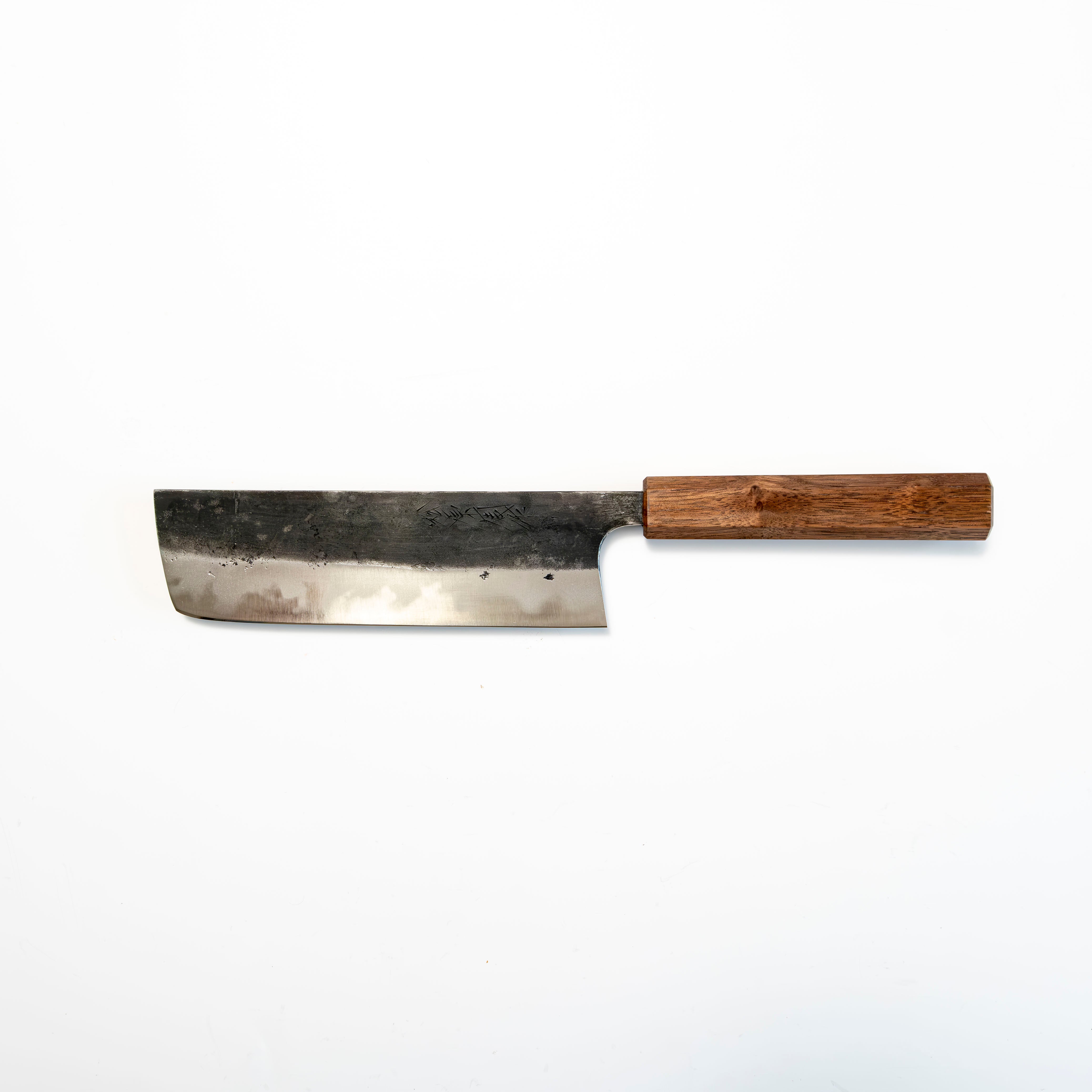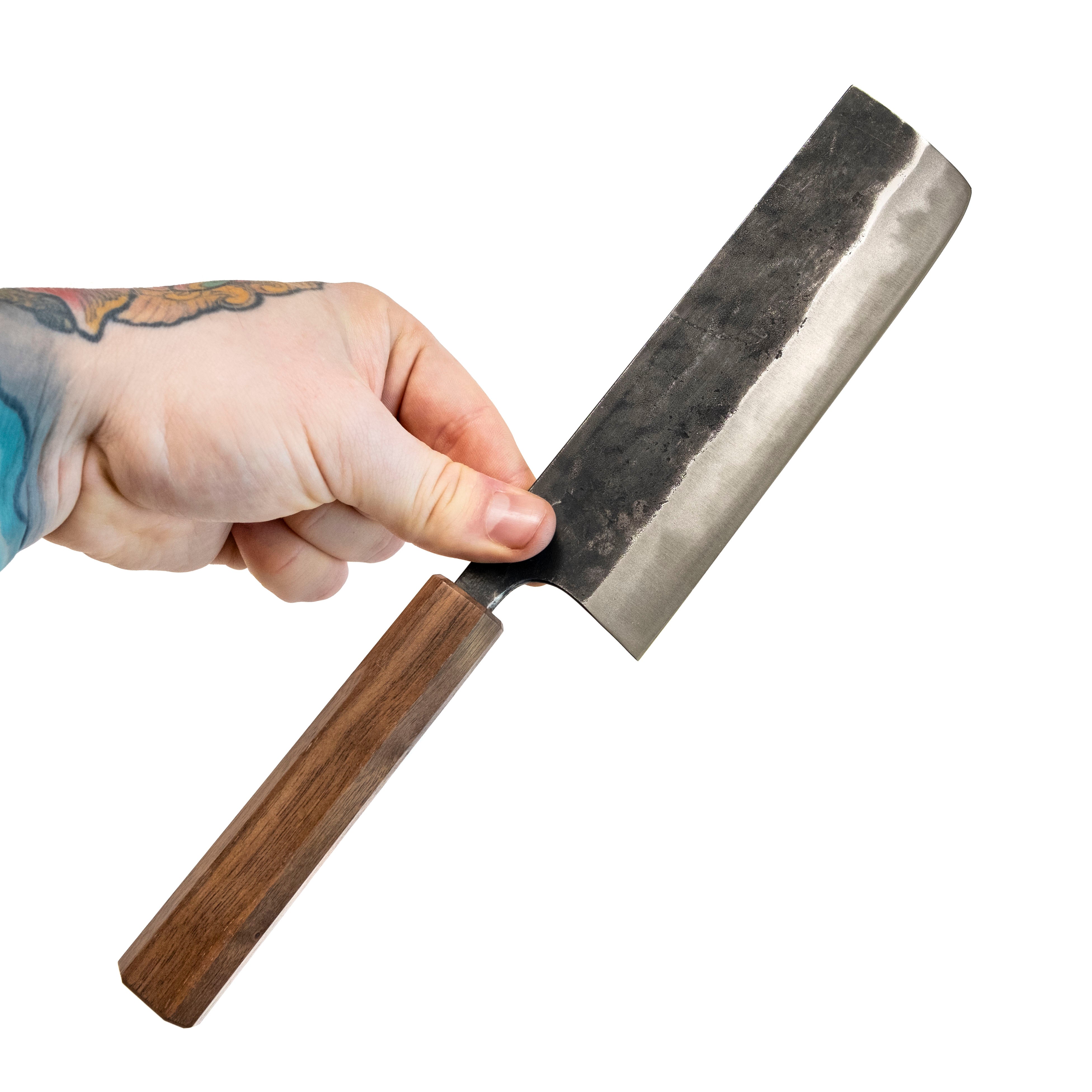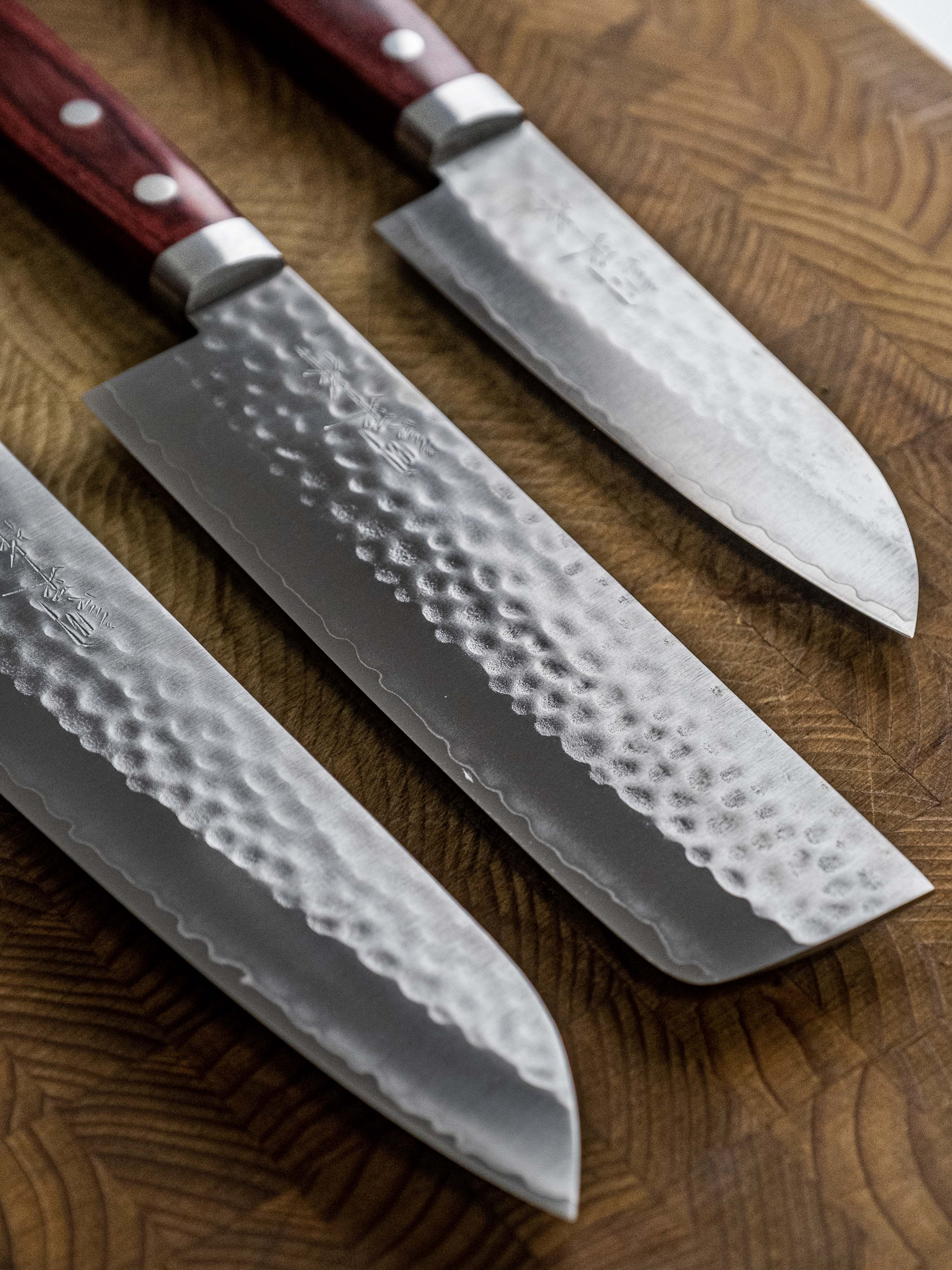Menu
















Matsubara Hamono Kurouchi Nakiri 165 mm
- Sale price
- $220.45
- Regular price
- $244.95
- You save
- $24.50 (11%)
Taxes and shipping calculated at checkout
Only 1 left in stock!
Product Information
| Blade Length | 165 mm |
| Total Length | 317 mm |
| Steel | Shirogami #1 (Iron Clad) |
| Handle | Walnut |
| Ferrule | N/A |
| Rockwell | 64 |
| Height Spine to heel | 52 mm |
| Width at Spine | mm |
| Weight | 164 g |
| Bevel | Double (50/50) |
The Blacksmith
Tanaka Kama Kogyo is the leader of the Matsubara hamono workshop and directs a small team of employees along with his son who is slated to take over operations after Tanaka-sans retirement. He forge welds the steel he uses to make his knives in house which is becoming a rarity even amongst skilled blacksmiths in Japan. They work in the Nagasaki region of Japan and make some truly awesome knives which are loved by knife enthusiasts for their edge retention and tall blades. Each blade is very handmade and unique, as head Blacksmith, Katsuto Tanaka-san, hand forges using traditional techniques, working with primarily Shirogami #2 and Aogami #2 steel. The family also has a history in sword-making and tool making, and has since transitioned to kitchen knives, for their practicality and growing demand for traditionally crafted products.
Matsubara Hamono blades have an above average blade height, as they tend to lean over 50mm tall. Their profiles are easily recognizable for the height, as well as gentle curve, with a large flat spot towards the heel, making them very versatile in shape. The height makes knuckle clearance a non-issue, and doubles as an easy ingredient scooper! The blade width typically holds steady from heel to tip, and the thinness towards the edge varies from midweight to quite fine, making them feel robust with a smooth cutting feel.
The Knife
The Bunka can be thought of as a cross between a gyuto and a nakiri and features a reverse tanto or "k-tip" which makes it adept at more intricate tasks like brunoise shallow and garlic. It is an extremely versatile shape and because it's a touch shorter than a typical chef's knife or gyuto, it is a great option for both home cooks who find larger knives difficult to use or for the professional looking for something compact, nimble and capable or who might be working in a small, tight kitchen.
- This Knife is made from 3 layers of material; A layer of iron on each side protecting a layer of carbon steel at the core, in a process referred to as Sanmai or forge welding. Iron and carbon steel are both susceptible to rust and must be kept dry and clean at all time’s to avoid oxidation and discolouration.
- Simply wipe the knife with a damp cloth immediately after use.
- Wash with regular dish soap and warm water using a none abrasive sponge or cloth.
- Never put your knife in the dishwasher! The extreme heat will ruin the wooden handle.
- Highly acidic ingredients (Onions, Tomatoes, Citrus) Will cause rust and oxidation to happen faster, thus the user must ensure the knife is wiped clean immediately after working with such an ingredient.
- Should any rust form it can be removed using a rust eraser or a mixture of Baking soda and water to simply scrub it clean.
- Avoid Bones, Frozen foods, nuts and hard candies or anything other than fruits, vegetables and proteins.
Recommended for You
- Choosing a selection results in a full page refresh.
SHOP
IN-STORE CLASSES/SERVICES
STORE POLICIES
CONTACT US
142 JAMES ST. S HAMILTON ON L8P3A2
MONDAY - SATURDAY :
11 AM to 6 PM
SUNDAY : CLOSED
195 NORSEMAN ST UNIT 14 ETOBICOKE ON M8Z0E9
MONDAY - SATURDAY :
11 AM to 6 PM
SUNDAY : CLOSED
Country/region
© 2024, SHARP Knife Shop Powered by Shopify





